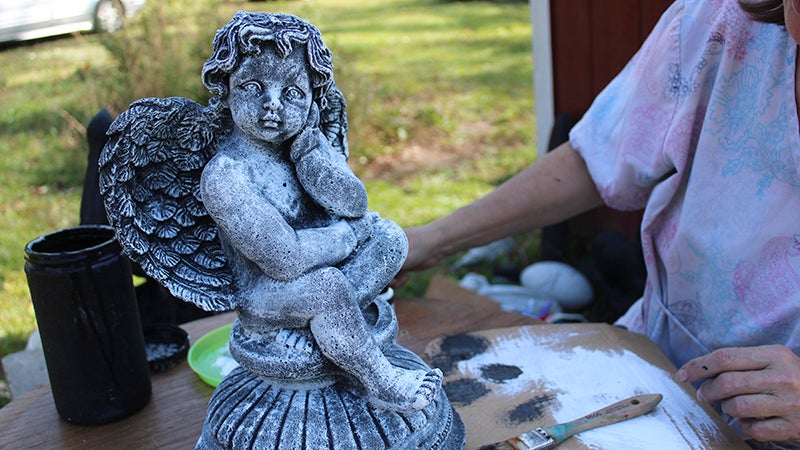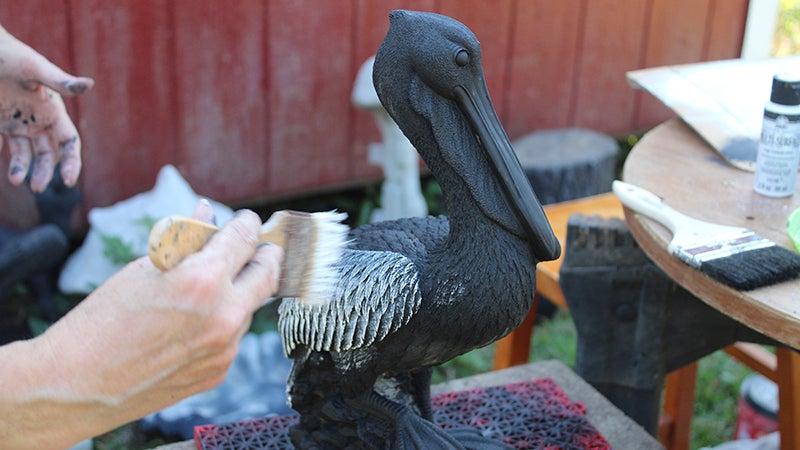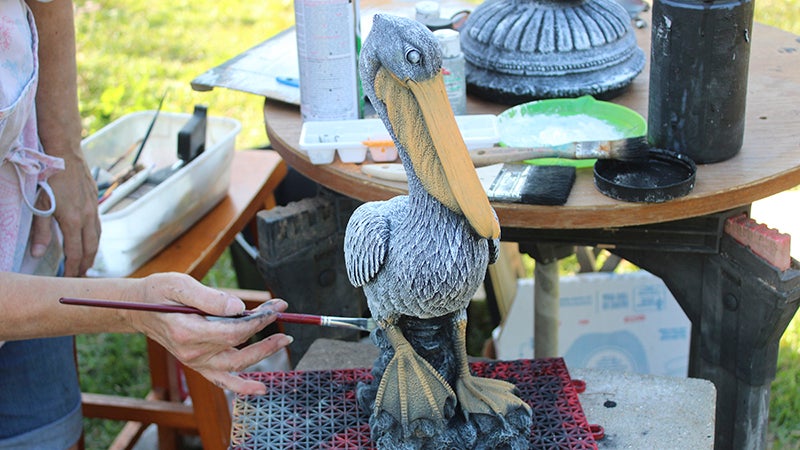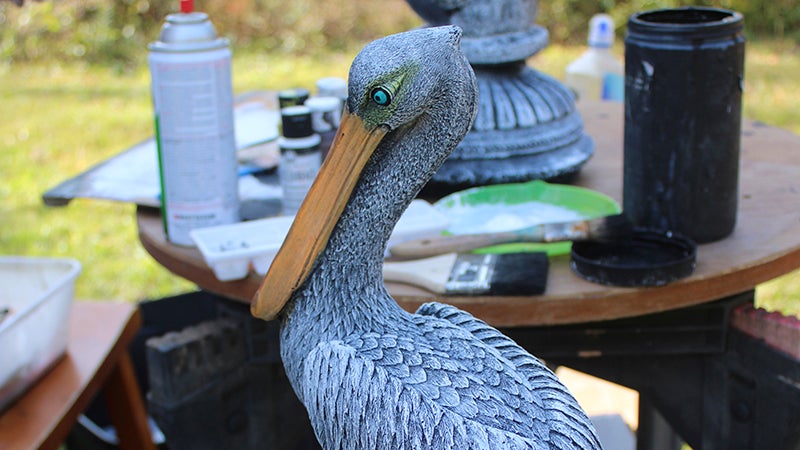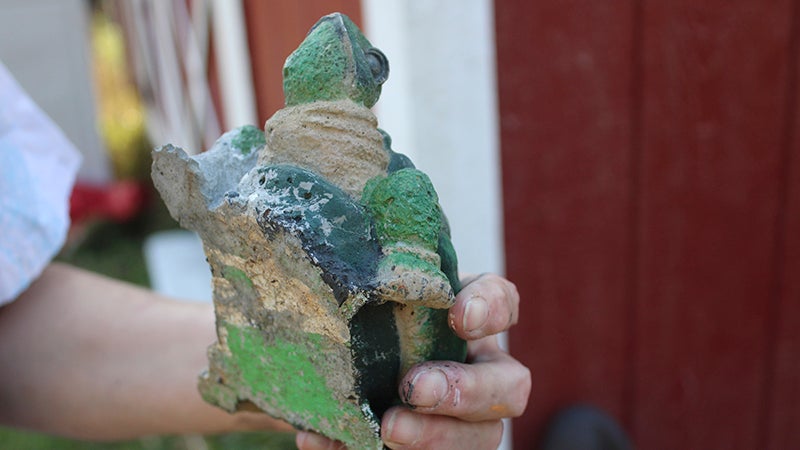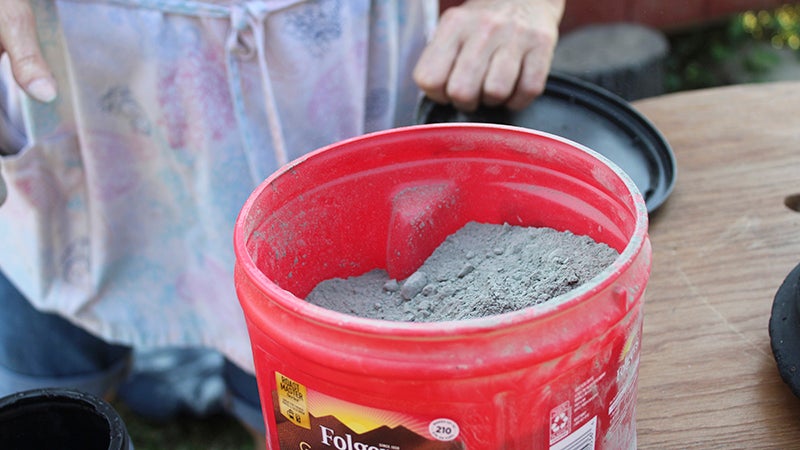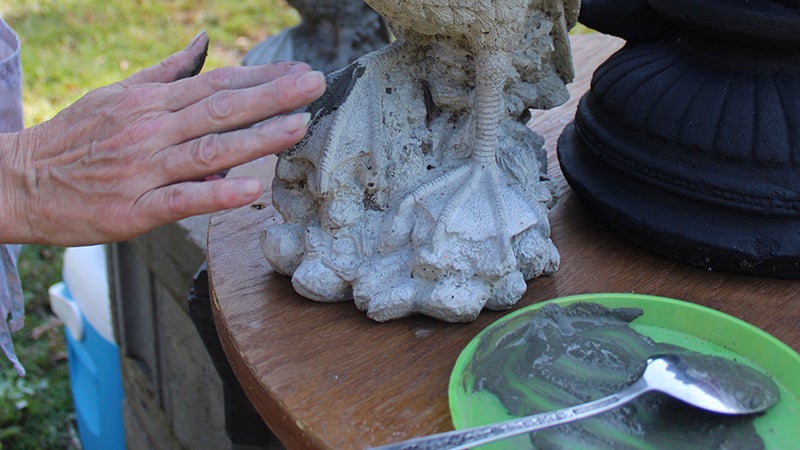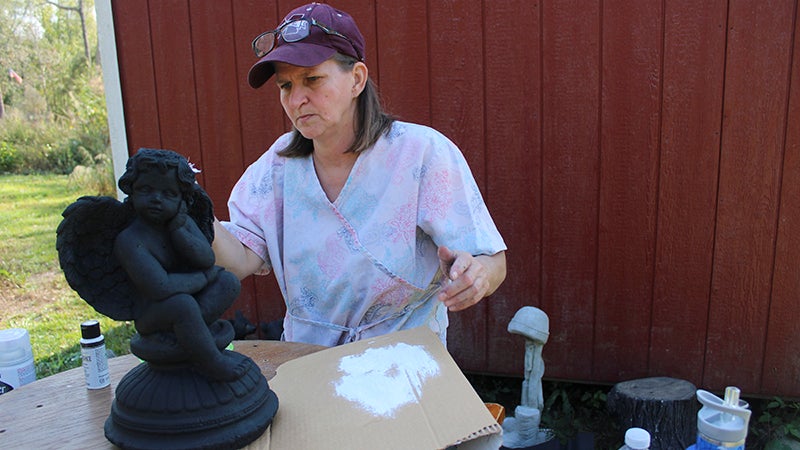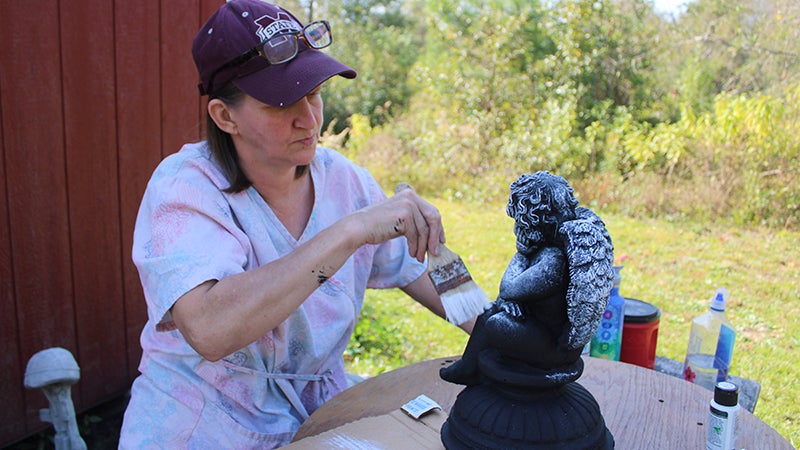Bringing new life to old statues
Published 7:00 am Saturday, November 21, 2020
Concrete statues are brought to Angela Rogers missing a leg, having a broken beak or displaying large cracks; she is then tasked to put her skills to use repairing and repainting them.
“I’ve rebuilt the bills on pelicans. Their tails have been knocked off and I’ve built their tails back on,” she said.
In preparation for a repair of a pelican statue, Rogers pulls out a Folgers canister filled with concrete. She mixes the powder with water, then applies it to holes in the feet and back on the concrete pelican.
Sometimes the repairs are more extensive than filling small holes, such as creating a new leg for a turtle or adding wire to give more structural support.
The concrete typically takes a day or two to dry. Once it’s dry she can prime the statue, often with black acrylic paint. She pours water over the statue first so that the paint will have a clean surface to adhere to.
For the pelican, she primes the bird with black paint. When the first coat is dry, she dry brushes white paint in quick motions across its wings and feathered neck.
“You really can’t mess up when you use acrylics,” she said. “You just start over. If you use spray paint, and you mess up, you ruin it. The more you layer on spray paint, the gummier it gets. This just soaks into it and it dries really quick.”
After it’s painted, she sprays the statue with a lacquer to make the paint pop and protect it from the elements.
With layers of black, green and gold paint, Rogers can make a concrete mermaid look like a brass statue. She can paint an owl’s feathers in shimmery purple and blue to look like it flew out of a fantasy novel.
“Seeing it go from concrete to the finish, I’m proud of myself. It’s like, ‘look what I did.’ And it’s fun. It’s like washing your car and it’s really dirty and messy on the inside, and when you’re done with it, when you get finished, you’re like, ‘Look what I did.’”
Eyes on human figures are some of the most challenging details to paint.
“It takes like an hour or two to do the eyes, to get the eyes right, because you don’t want it looking like it’s coming to get you.”
Rogers has always liked painting, but she did not paint regularly until two years ago. YouTube tutorials taught her how to layer colors to create depth and which paint lasts the longest on concrete.
Someday she hopes to make her own video tutorials for other aspiring statue painters. Her work can be found online on Facebook at Angies Painted Statues.


